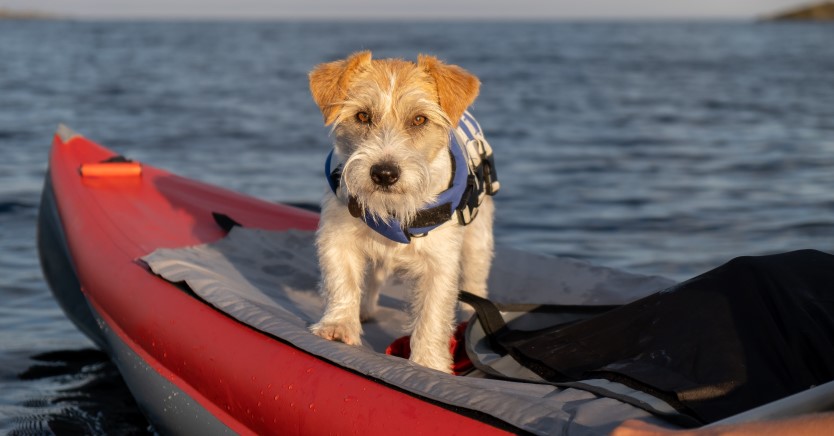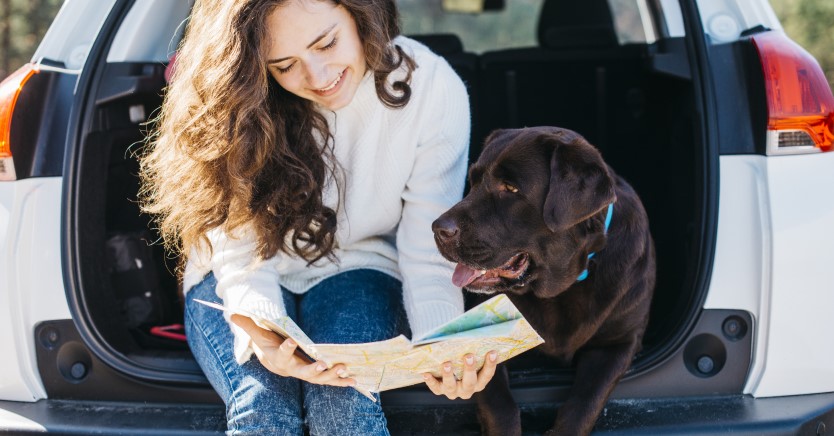Dog Park Etiquette
Before heading to the park, review these dos and don'ts of dog park etiquette.
.jpg)
Are you suffering from cabin fever or just feel that you don’t get outside enough? Chances are, your canine buddy is feeling the same way. A walk in the neighborhood is a great way to get some exercise, fresh air, and clear both human and canine minds, but what about the more social side of life? Dogs need to hang out with canine comrades just as much as you need time with your human companions! And that, my friend, is where the dog park comes into play.
Maybe you’re new to the dog park, or maybe you’re a regular, but either way, (re)learning the dos and don’ts of dog park etiquette is an important part of ensuring everyone has a good time.
The following are 12 etiquette essentials that, if followed, will make you and your pup the Emily Post of the dog park.
Know your dog
This may sound like a no-brainer, but when you love your dog, it’s easy to overlook some behavioral issues that could cause trouble at the dog park. For example – does your dog like to play rough? Does he growl while playing? Is she dominant or submissive? Before you go to the dog park, spend some time really thinking about and observing your dog’s behavior. Here is a checklist of things to be aware of.
- Barking – Does your dog have a friendly, play-motivated bark, or is her bark more menacing, such as accompanied by growling and raised hackles?
- Biting – Does your dog’s play-biting ever escalate to become threatening?
- Recall and commands – Does your dog quickly respond to your commands of come, stay, sit?
- Guarding behaviors – Does your dog aggressively guard food, toys, or even you?
- Body language -- Do you know your dog’s body language and associated cues?
- Humping -- Is your dog prone to humping or mounting other dogs? If yes, under what circumstances?
- Jumping: Does your dog jump on people?
Avoid stereotyping breeds
It’s no surprise that certain dog breeds are viewed with contempt by some people, including some dog owners. Most often, these views are the result of ignorance and lack of knowledge and experience. Be open-minded and accepting of all dogs, and spend some time getting to know other owners and their dogs. In other words, leave your breed biases behind.
Communicate with other owners
Talking with other owners promotes understanding of differences as well as how your dogs respond to different situations. Be open to new ideas and suggestions, especially if you are new to the park. Make a point to be friendly and learn to brush off negative comments. Stay positive: your dog will pick up on your upbeat attitude, too.
Avoid bringing treats
You’ll find that some people insist on bringing treats for their dog as training tools, but although there are some things to teach a dog in the park, it mostly is not the best place for this. Dogs have one of the best olfactory tools on the planet and can sniff out most anything yummy, no matter how obscure the hiding place. In other words, if you bring treats for your dog, every other dog in the park will know it. Dogs have a variety of reactions to smelling good things, and it’s not fair to them, or their non-treat-bearing owners to have to deal with any untoward behavioral issues due to your dog’s treats. In short – leave the treats at home.
Leave children at home
Although many children are dog-savvy, not all dogs are kid-savvy. The combination of any child with a park-full of dogs is dubious at best. Small children often tend to run, jump, and move quickly which can startle some dogs, possibly triggering them to bite. Some dog parks have rules about children, ranging from not admitting them at all, to having a kid cut-off age.
Observe gate enter/exit protocols
The gate to the dog park is the place where things can go very wrong. Most parks have a double gate so your dog can enter a small, secure area while you remove the leash. Dogs are almost always excited and highly energetic at this point, knowing there are other dogs willing and waiting. Once you have removed your dog’s leash, open the second gate and onward for fun and play. Potential issues can arise if you enter the gate area while another dog and owner are either entering or exiting the park.
Be aware of your dog’s behavior at all times
Going to the dog park is not only fun for your dog, but it can also be a wonderful socializing opportunity for you. In fact, it can be such a chance to chat or catch up that you forget about your fur-friend who may be reaching the limits of acceptable dog park behavior. Definitely enjoy your fellow dog owners, but do keep an eye on your dog at all times.
Don’t leash or muzzle your dog
Dogs have their own social protocols and when they encounter another dog that is leashed or muzzled, tensions arise because your dog is deemed “different.” Different in dog language can be a trigger for aggression.
Bring enough doggy bags and use them
Surely you have had the unfortunate experience of stepping in a pile of dog poop. It’s essential that you bring enough poop bags to clean up after your dog. Everyone wants a clean, poop-free dog park.
Make sure your dog is up on all vaccines
Depending on how the dog park operates, you may or may not have to show proof of vaccination. Make sure your dog is up on all vaccinations both as protection for him as well as other dogs.
Discourage humping and mounting
Not only do these behaviors make some dog owners uncomfortable, they can also be triggers for more aggressive behaviors. On the other hand, some dog owners don’t discourage it and see it as normal dog behavior. If your dog is a humper, do discourage the behavior at the dog park.
Intervene when necessary
Times may arise when your dog is engaged in play that’s becoming borderline aggressive as well as making other owners uncomfortable. It may be time to leave. Likewise, your dog may be other end of too-tough behavior, another signal that it’s time to leave for the day.
Both you and your dog can enjoy many good times and benefits from your dog park outings. The secret to making these outings fun and worry- free is to follow these points of etiquette.
Ready to start saving money on pet wellness care?
Then take a look at Mint Wellness, the pet wellness plan that provides fast reimbursement on routine pet care. Save on vaccinations, wellness exams, preventatives, dental, and more!
Learn More


